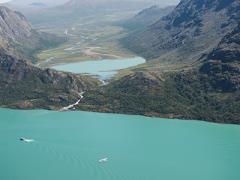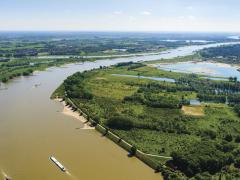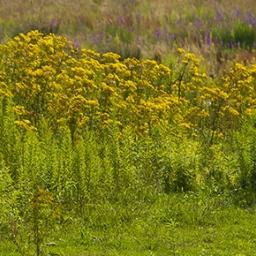Exploring Nature-Positive Pathways
To reverse the persistent trend of biodiversity loss to recovery of nature, nature policy needs to be combined with policies on climate mitigation, and food and energy systems must be reformed. This is one of the conclusions in the report Exploring nature-positive pathways. The report explores various pathways to achieve global goals for biodiversity, from a global perspective. The study shows what the pathways towards a nature-inclusive world may look like, and what governments can do to build on the efforts already made by civil society actors for the benefit of nature.
Bending the curve of biodiversity loss
A quantitative analysis of solution-oriented scenarios shows that ambitious conservation efforts alone will not be enough to bend the curve of biodiversity loss, and might even increase trade-offs between conservation and other sustainability goals, such as food security. To achieve biodiversity, climate and food security goals together, ambitious conservation strategies need to be complemented by broader sustainability measures. These measures include climate mitigation in line with the 1.5 °C objective of the UNFCCC, reduction in meat and dairy consumption and food waste, and making agricultural production more sustainable. Consumption changes, in particular, are key to avoid trade-offs in combined biodiversity, climate and food security policy agendas.
Building on nature-related efforts by non-state and sub-national levels provides opportunities for change
Over the past years, there has been an increase in the contributions from non-state and state actors on regional and local levels (e.g. cities, regions, companies, NGOs, and indigenous peoples) to conserve and restore nature. The CBD calls this a ‘whole-of-society’ approach to change, which is also recognised in its post-2020 Global Biodiversity Framework. The CBD could build on this ‘groundswell of action’ to strengthen future implementation, as these initiatives provide the seeds of transformative change for biodiversity. However, there are barriers to scaling up these bottom-up efforts, such as a lack of both recognition and adequate governmental policies to support these initiatives. The question, then, is how non-state actors and state-actors on local and regional levels could be more effectively supported by their national government and international institutions to achieve the transformative changes that are needed.
Nature-positive pathways are possible
The objective of a nature-positive future is defined as reversing nature loss to achieve a net positive improvement by 2030 (i.e. resulting in more biodiversity and nature in 2030 than we have today), with full recovery by 2050 (requiring large-scale restoration of nature). This report explores what nature-positive pathways could mean in three specific configurations of societal actors and nature: rural landscapes, supply chains, and cities. The configurations are networks where non-state actors and state actors on sub-national level and national governments are considered together with different types of nature (e.g. agricultural lands, wild areas, urban parks). The analysis shows that options for nature-positive pathways are available to the non-state and sub-national state actors in these configurations. This points to the possibilities for national governments to develop policy strategies aimed at actors in these specific contexts to enable transformative change.
Achieving ambitious nature goals must happen within a framework of multiple values of nature and justice
To support a whole-of-society approach, government authorities should recognise and support the multiple ways that stakeholders value, depend on and integrate nature in their operations and activities. Recognising and rewarding multiple values of nature would provide national governments with an opportunity to strengthen non-state actors and state actors on sub-national levels in their commitment to change. Government authorities need to deal with power imbalances between stakeholders and economic sectors to ensure a just transformative change and avoid adding to socio-environmental injustices, marginalisation and harm to certain groups within society.
National governments have an important role in supporting and enabling whole-of-society approaches
Many societal actors around the world are already mobilising and taking action for biodiversity, showing the first stages of the transformative changes needed (‘seeds of change’). This report suggests that this ‘groundswell of action’ requires a series of government interventions to accelerate and scale up those efforts. National governments can support these bottom-up efforts by acting on three fundamental levels: systemic, structural and enabling. Acting on these levels simultaneously is needed to avoid trade-offs between agendas and approaches. Government authorities need to work on the systemic level of change, promoting cooperation, innovation and interaction between actors and all sectors and removing those barriers that are currently hindering actors in achieving change and scaling up their efforts.
Ambition of the CBD post-2020 Global Biodiversity governance Framework is strengthening whole-of-society approaches
To achieve the CBD 2050 vision of living in harmony with nature as well as the new goals and targets for 2030, the new global framework on biodiversity governance needs to support national governments as well as the whole of society. While the importance of whole-of-society approaches for biodiversity is increasingly being recognised, this still needs further attention on an international level, as an integral part of CBD’s implementation mechanisms. This may include strengthening the Action Agenda for Nature and People and supporting national action agendas. In this respect, high-level champions can play an important role, also in connecting national and international level action. In addition, aligning with international, national and sub-national goals and policies on climate, food security, sustainable production and consumption and other SDGs and integrating them in nature-positive development strategies is essential. This would also create opportunities for orchestrating non-state efforts in other policy domains. Experimenting with the inclusion of non-state actors and sub-national government authorities in CBD peer-review processes will help strengthen learning and enabling approaches to attain the new post-2020 goals and targets. Accountability mechanisms that provide insight into the contributions by non-state actors and sub-national government authorities towards achieving the post-2020 goals and targets should also be strengthened further. This is especially important to ensure visibility and credibility of whole-of-society contributions to the goals of the CBD.

Authors
Specifications
- Publication title
- Exploring Nature-Positive Pathways
- Publication subtitle
- A contribution to the implementation of the CBD Post-2020 Global Biodiversity Framework
- Publication date
- 16 November 2022
- Publication type
- Report
- Page count
- 80
- Publication language
- English
- Product number
- 4439




